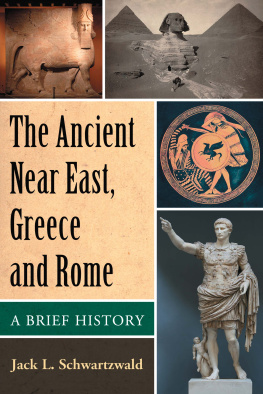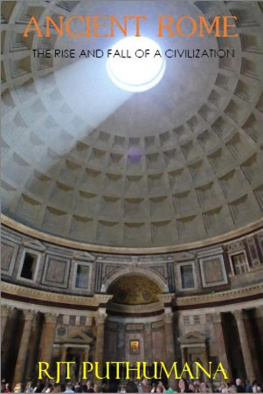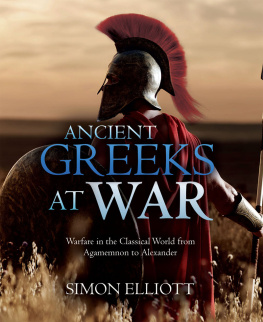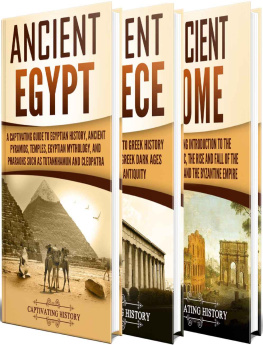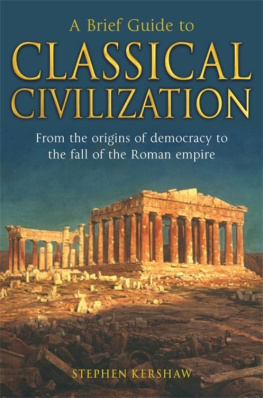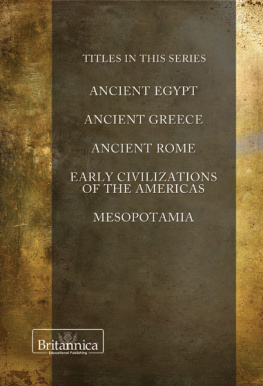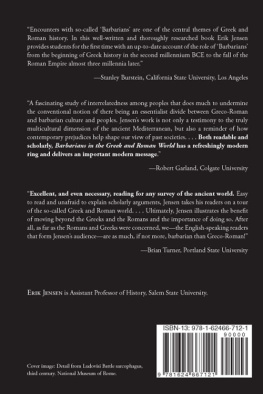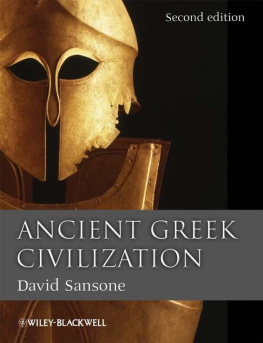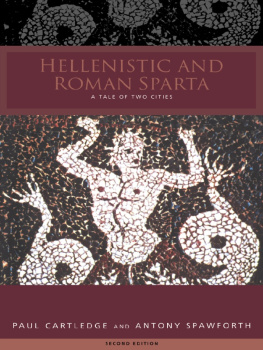THE STORY OF GREECE AND ROME

Copyright 2018 Tony Spawforth
All rights reserved. This book may not be reproduced in whole or in part, in any form (beyond that copying permitted by Sections 107 and 108 of the U.S. Copyright Law and except by reviewers for the public press) without written permission from the publishers.
For information about this and other Yale University Press publications, please contact:
U.S. Office:
Europe Office:
Set in Minion Pro by IDSUK (DataConnection) Ltd
Printed in Great Britain by TJ International, Padstow, Cornwall
Library of Congress Control Number: 2018939477
ISBN 978-0-300-21711-7 (hbk)
A catalogue record for this book is available from the British Library.
10 9 8 7 6 5 4 3 2 1
CONTENTS
MAPS AND PLATES
Maps
Plates
.
ACKNOWLEDGEMENTS
F or different kinds of help and opportunities which I have drawn on in writing this book I am grateful to many people and institutions over many years, and not least to: Carla Antonaccio; Josephine Balmer; Bob Barber; Richard Bidgood; Manfred Bietak; John Boardman; the British School at Athens ( is based on my research as a British School Visiting Fellow in 2014); the late Hector and Elizabeth Catling; Erica Davies; Esther Eidinow; Nelson Fernandez; Anastasia Gadolou; David Gill; Heinrich Hall; Paul Halstead; Andrew Hobson; Simon Hornblower; Monica Hughes; Lucia Iacono; the Joint Library of the Societies for Hellenic and Roman Studies, London, and its staff; Peter Jones; Nota Karamaouna; Marie-Christine Keith; Stephanie and Nigel Kennell; Maria Lagogianni; Jona Lendering; Chris Mann; the late Chris Mee; Michael Metcalfe; the late John Moles; Lyvia Morgan; Andrew Parkin; Derek Phillips; Chrysoula Saatsoglou-Paliadeli; Rowland Smith; Allaire Stallsmith; Ann Steiner; Lucrezia Ungaro; Manuel Vason; Rania Vassiliadou; Sally Waite; Susan Walker; Jennifer Webb; and John Wilkes.
I owe a special thanks to Paul Cartledge, not only for helpful conversations but also for his rigorous scrutiny of a first draft. I am grateful to the wise and careful comments by Yales anonymous readers, which I have done my best to take on board. More broadly, I am indebted to the scholars whose writings and researches I have absorbed in my thinking and writing. They are many, many more than are identified by name in the limited references at the back of this book.
Shortcomings that remain, of whatever kind, are mine alone.
I was lucky to have had the chance to try out some ideas for how to write the book while a speaker on cultural tours run by the Cultural Travel Company; Martin Randall Travel; Peter Sommer Travels; and the UK Friends of the British School at Athens. I am grateful to the guests on these tours for their patience, their interest and their observations, which were more valuable than they sometimes seemed to think.
At Yale I am indebted to the books editors, Marika Lysandrou, whose suggestions helped significantly to pull the book into better shape, and Rachael Lonsdale, who saw it through to publication. I am grateful to Heather McCallum, who invited me to write this book and who has encouraged me throughout.
I thank Andrew Lownie for his support, moral and practical. Finally, there is my deep gratitude, as always, to Lee Stannard.
Tony Spawforth
January 2018

1. The Greek goddess of grain, Demeter, despatches a demi-god in a winged chariot to teach agriculture to humankind. This scene features on an Athenian vase now in the Louvre, from around 470 BC .

2. Emperor Hadrian ( AD 117138) defends civilization from the barbarians. This modern plaster cast in Rome is taken from a marble statue from Crete, now in the Istanbul Archaeological Museum.

3. A young male with Minoan-style locks leaps over a bull. This fragment of a wall painting was uncovered in the excavation of an ancient Egyptian palace at modern Tell el-Daba. Here, the colours have been digitally restored by Clairy Palyvou. The painting is thought to date from roughly 14731458 BC .

4. One of the earliest texts in the new script which the ancient Greeks adapted from the Phoenicians. Scratched onto the shoulder of a wine jug from Athens, late 700s BC , it reads: He who of all the dancers now performs most daintily

5. Two armies of Greek heavy infantrymen about to collide as they march into battle to the sound of pipes. This scene is from a pottery jug made in Corinth about 640 BC , showing what at the time was a new style of group fighting in tight formation.

6. The remains of the paved haulage across the Isthmus which the Corinthians built around 600 BC to facilitate, and profit from, eastwest trade.

7. An unfinished Greek-style temple (late 400s BC ) commissioned by the city of Segesta, or Egesta, a pre-Greek community in Sicily which went on to adopt (and adapt) cultural traits from neighbouring Greek settlers.

8. The so-called Tomb of the Leopards at Tarquinii: an Etruscan tomb-chamber of about 480 BC showing men and women sharing couches as they recline at a banquet.

9. In the depiction on his tomb, Xerxes I, bearded and carrying a bow, stands on a platform-like throne supported by two rows of figures representing different groups of imperial subjects.

10. A modern lifesize replica of an ancient Athenian war galley with three banks of oarsmen per side (a trireme). Trialled at sea in the 1980s, the Olympias belongs to the Hellenic Navy and is now in a dry dock in Piraeus, Greece.

11. The so-called Ear of Dionysius, the most spectacular of the ancient quarries of Syracuse. The Syracusans kept Athenian prisoners of war in cruel conditions in one of these quarries after the failure of an Athenian expedition to Sicily in 413 BC .
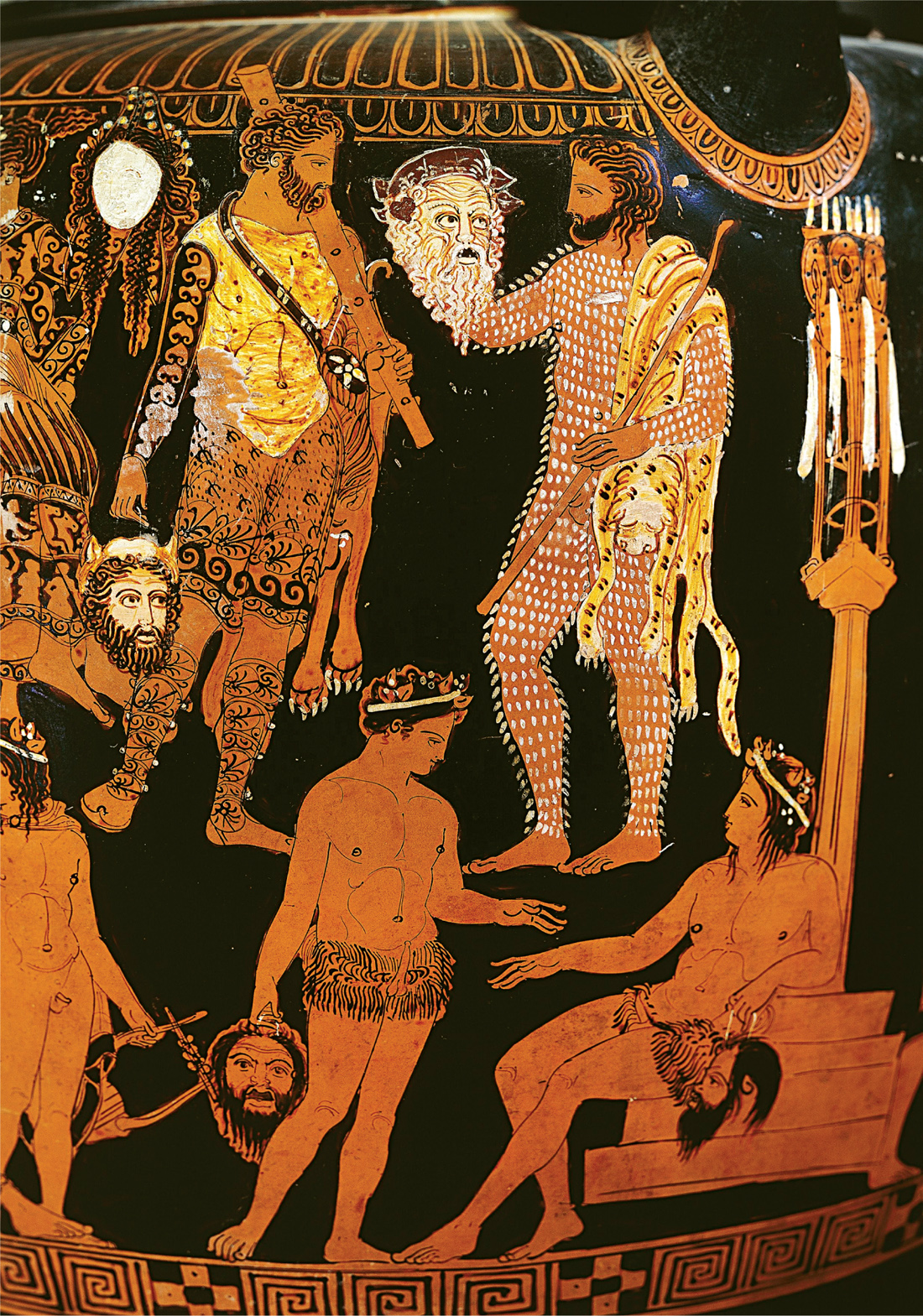
Next page


